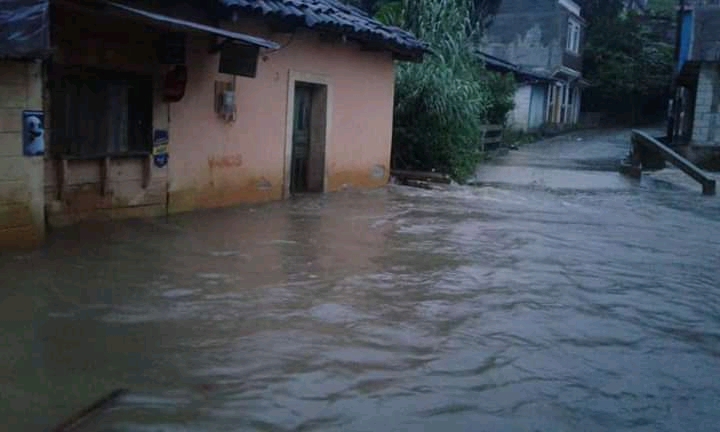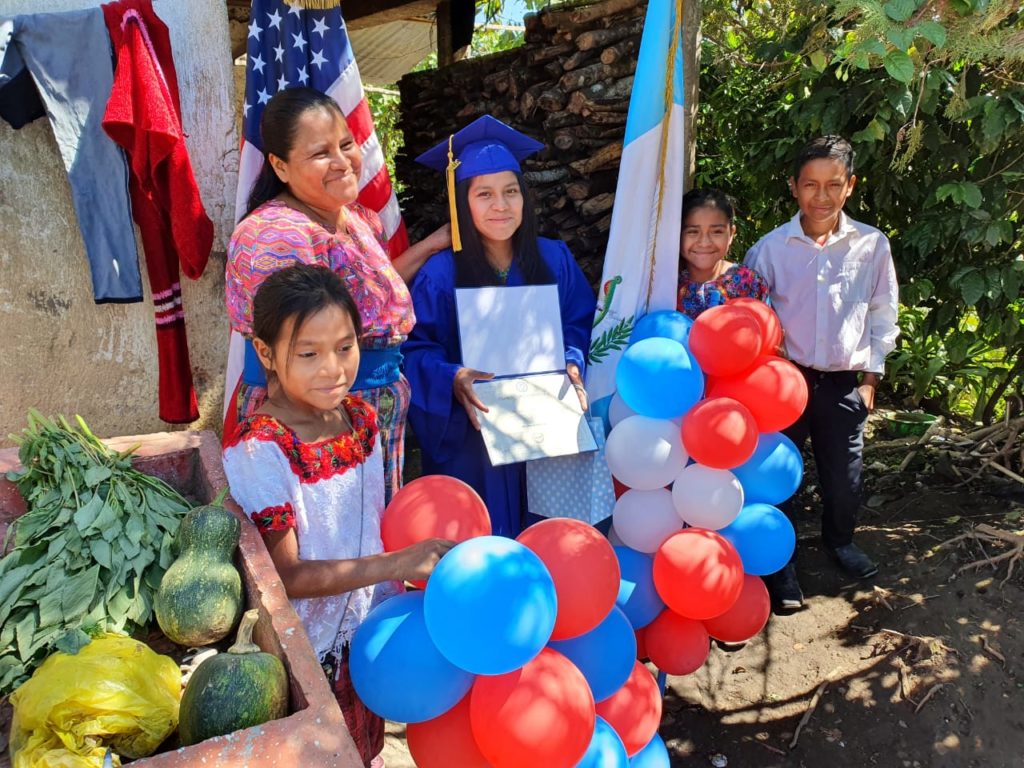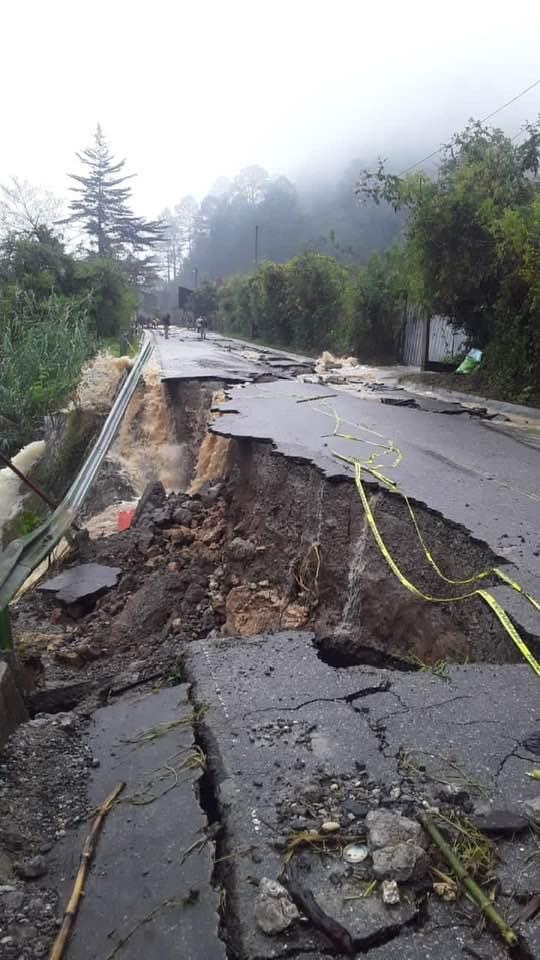
Heavy rainfall from two back-to-back hurricanes in less than two weeks has devastated the Ixil region of Guatemala. Hurricane Eta, a Category 4 storm, hit the Ixil region around November 5-8th with torrential rain. A brief respite from the rain in mid-November allowed our Nicolás Christian School graduation to take place on a beautiful, sunny day with roads that allowed Professor Braulio (principal) and Ivan España (Country Director) to visit every graduate’s home in every village to bestow diplomas and offer congratulations.

Circumstances changed drastically when Hurricane Iota hit Guatemala a few days later. Massive rainfall led to severe flooding that destroyed 65% of the cornfields, killed livestock, ruptured and collapsed roadways, and washed-out bridges. Mudslides killed several people, and entire villages were rendered uninhabitable. Sumal Grande and Sumalito villages suffered significant damage in Hurricane Eta.
Even before Hurricane Iota hit, the International Federation of the Red Cross and Red Crescent Societies (IFRC) described the situation in the Ixil region as a “major humanitarian crisis.” IFRC planned a large-scale disaster response, but at least initially, most of the communities have were left to fend for themselves. Groups of Ixil volunteers helped to evacuate those stranded by high water.
Hurricane Iota delivered the knock-out punch only a few days after NCS graduation with tremendous rainfall (more than five inches in 48 hours), flooding, and mudslides destroying essential roads and bridges. The villagers from Villa Hortensia 2 and Villa Hortensia Antigua evacuated to Cunen (where Professor Braulio lives). Villagers from Santa Avelina 1 and 2 walked for hours to reach refuge in Villa Hortensia 1. Several mudslides and flooding led several families to evacuate Cajixay. Some Cajixay families fled to VH1 and others to Cunen. Four families from La Esperanza temporarily evacuated to Nicolás Christian School. The road between La Esperanza and VH1 is so damaged that a truck can only drive about a mile past La Esperanza.

Severe roadway damage by Cajixay has completely cut-off our access to VH1, but my understanding (unverified) is that VH1 may be accessed from the other side of the mountain through Cunen. Despite all these obstacles, Nicolás Fund for Education was still able to deliver COVID-19 food relief bags to La Esperanza, San Nicolás and Bélen, La Bendicón, Los Angeles, Cotzal, and El Paraiso. The truck could only drive a little past La Esperanza, and students from Bélen and San Nicolás walked down and carried the food relief bags home from there. The road out to La Bendición is only passable until Santa Avelina, because a critical bridge washed out. The most severely impacted villages are up around Trapachitos, Sumalito, Sumal Grande, and Xeulcavitz. In Xeulcavitz, a mudslide struck 80 of 220 families and reportedly buried four people. At least two people died: reports are that a woman and her 11-year-old son were killed. These villages are entirely cut off from help. Thanks to assistance from Alberto Solano from Agros International, food relief was able to be delivered via helicopter to those villages and to VH1. Agros is working with CONRED, Guatemala’s disaster response agency and the Guatemalan military to deliver donated food packets from El Salvador and by Agros. The food packets are small, though, and helicopters flying at high altitudes have trouble managing weight. And without repairs to infrastructure, these villages will be cut off indefinitely. Several villages (including La Esperanza) lost their potable water systems due to mudslides.
We give thanks to God that none of our students or their families suffered destruction of their homes or deaths.
According to Diego Ceta, a Mayan Leader from Nebaj,
“Nothing like this had ever happened in the Ixil region. We have had an earthquake, and we have had genocide, but never a storm like this.”
Sandra Cuffe’s article in The New Humanitarian on 11-10-20 stated, “The communities in Nebaj most affected by Eta were not considered those most at risk of flooding or natural disaster. Ceto suspected deforestation due to logging operations factored into the unexpected impacts. “It is the fury of nature,” he said. According to spokesperson María Rossell, the Guatemalan Red Cross will soon begin assessing longer-term humanitarian needs, particularly with regard to the widespread destruction of crops and homes.
The severe damage to infrastructure will undoubtedly impact Nicolás Fund for Education programs in 2021. Fortunately, our students still have tablets, and the electricity is on. For now, we will be able to continue providing food relief to seven out of our eight villages. Please pray that we will soon be able to access VH1. When the new school year starts in mid-January, we hope to deliver new digital learning material to ALL our villages. One piece of good news to report is that our new school property did not flood. We are hopeful that the Joseph Project vegetable garden created by our 10 Talents students will continue to help feed hungry families. One thing we can all agree on: much prayer is needed.


Comments 1
My heart is broken for these people. May the Lord. Provide and protect them through relief efforts and sustain their hope. May the Lord’s goodness shine through this devastation to build their faith and the kingdom of God.